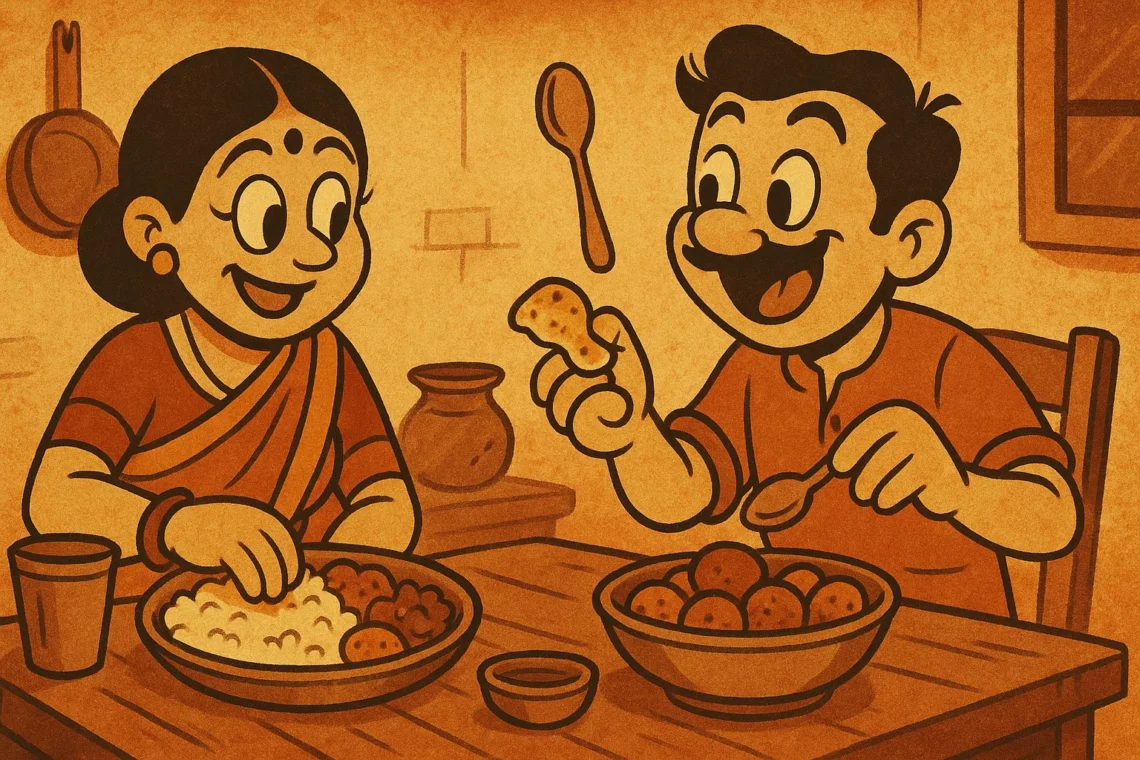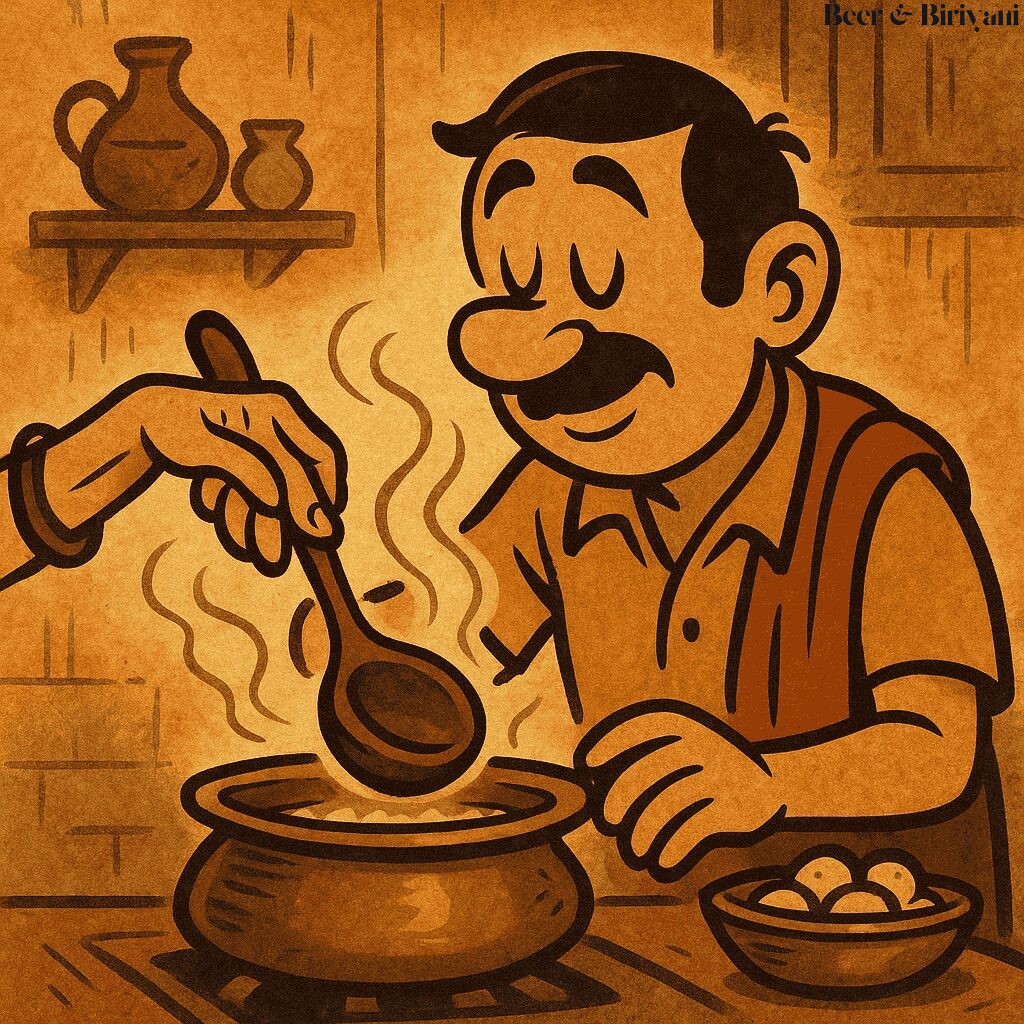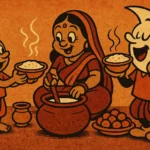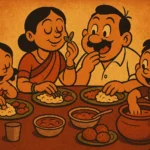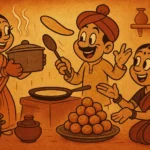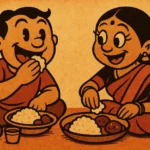There are meals where the spoon is a guest of honor—polished, placed neatly beside the plate, part of the formal table setting. And then there are meals where the spoon simply isn’t welcome. Not out of disrespect, but because it just doesn’t belong. In Indian households, especially the older ones, the spoon isn’t always invited to the table. Some foods demand your hands. Not as a backup utensil, but as the main event. Because when the meal is sacred, the fingers are the best tools you’ve got.
I don’t remember learning how to eat with my hands. Like most Indian kids, it was absorbed through repetition. Watching elders shape a mound of rice, swirl it in dal, and gently nudge the mix into the mouth with a practiced flick of the thumb. It wasn’t messy. It wasn’t clumsy. It was graceful—almost musical. And it came with rules. You only used your right hand. You didn’t let the food touch your palm. You didn’t lick your fingers mid-meal (that came later). It wasn’t just eating. It was etiquette.
Fingers Know Flavor
Using your hands isn’t just cultural—it’s sensory. You feel the temperature. You adjust the texture. You mash the rice just enough to absorb the rasam, roll a perfect bite of dosa with the right amount of chutney, scoop just the right amount of sabzi into a piece of phulka. You control the meal at a micro level. A spoon, for all its usefulness, doesn’t let you do that. It hovers. It separates. It removes you one step from the food.
Try eating curd rice with a spoon. It slides around, refuses to cooperate. Now try it with your fingers. It becomes a soft, forgiving cloud. Or imagine tearing a piece of flaky, layered parotta and scooping up a spicy curry—every fold catching a little bit of gravy. A spoon can’t do that. It doesn’t understand the crevices.
Some Foods Just Don’t Work with Spoons
There’s a category of Indian foods that simply rebel against cutlery. Puttu and kadala curry. Idli soaked in sambhar. Aloo chokha with litti. Dal-chawal with ghee, mashed into comfort with your fingertips. Even khichdi, that gentle one-pot wonder, finds its soul only when scooped and savored with hand-formed portions. And rotis? Try tearing a fresh, ghee-coated phulka with a spoon and you’ll understand why it’s not just impractical—it’s almost offensive.
And then there’s the communal aspect. Sharing food with your hands isn’t just about economy of tools—it’s about intimacy. At weddings, in temples, at roadside stalls—you see people seated cross-legged, banana leaves before them, eating with their hands. There’s no shame. No hesitation. Just the quiet, collective sound of food being honored directly from plate to palm.
The Spoon Makes an Appearance—But Later
This isn’t to say the spoon is a total outcast. It has its moments. Dessert, for example. Kheer, payasam, or shrikhand are best savored with a spoon—not just for cleanliness, but for the slow, scooping elegance it brings. Chai is stirred with one. Pulao, if served in polite company, might earn a spoon on the side. And when we’re sick or tired, the spoon feels like a small comfort—less work, more ease.
But the spoon is always secondary. A helpful ally. Never the hero. In everyday eating, the hand holds tradition. It anchors the act of eating not just in function, but in emotion.
Eating in the West, Remembering the East
When I first moved to Austin, I went full fork-and-knife for a while. Office lunchrooms, restaurant outings—it felt easier. Cleaner. Less conspicuous. But something was missing. A bite of dal without the press of fingers felt incomplete. The food wasn’t touching me. And I wasn’t touching it back.
Now, at home, the spoons wait their turn. When it’s biryani night or Sunday sambhar rice, I let the fingers lead. My son watches, curious. I tell him this is how we eat in our family. Not because we lack spoons. But because some meals are meant to be felt, not just eaten.
Hands First, Always
There’s an old saying that food tastes better when eaten with your hands. Science might chalk it up to sensory feedback. Culture calls it tradition. I think it’s both. Eating with your hands is an invitation—to slow down, to connect, to taste not just the food but the intention behind it.
The spoon will always have its place. But in the moments that matter, when the food is warm, the rice is ready, and the ghee has just been poured—it’s your hands that reach out first. And that, truly, is how a meal begins.
Born in Mumbai, now stir-frying feelings in Texas. Writes about food, memory, and the messy magic in between — mostly to stay hungry, sometimes just to stay sane.

